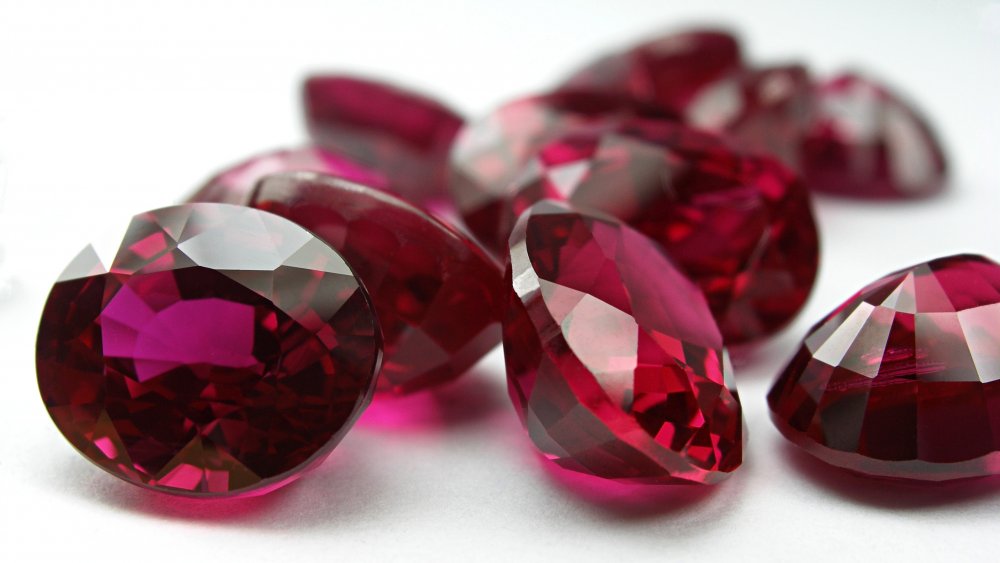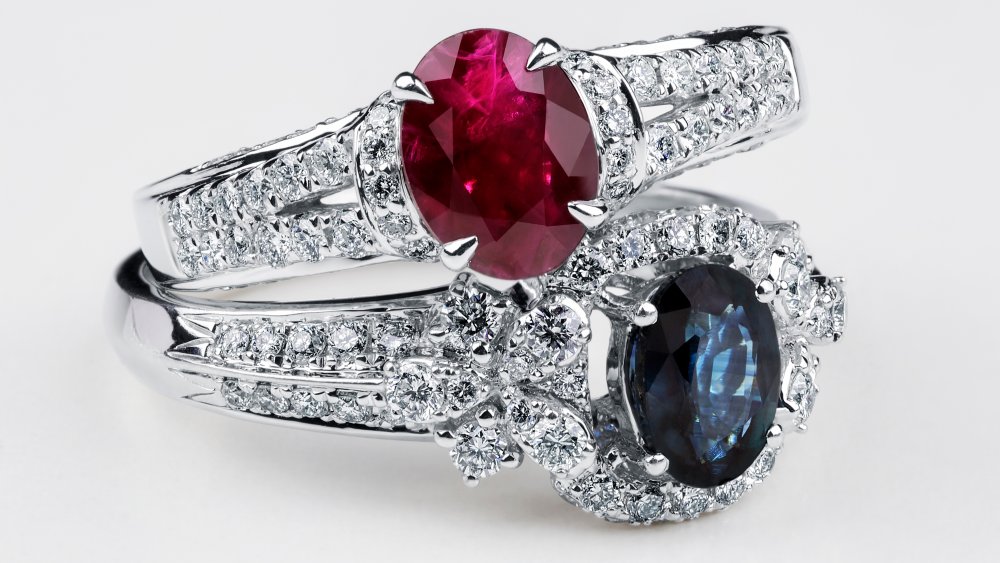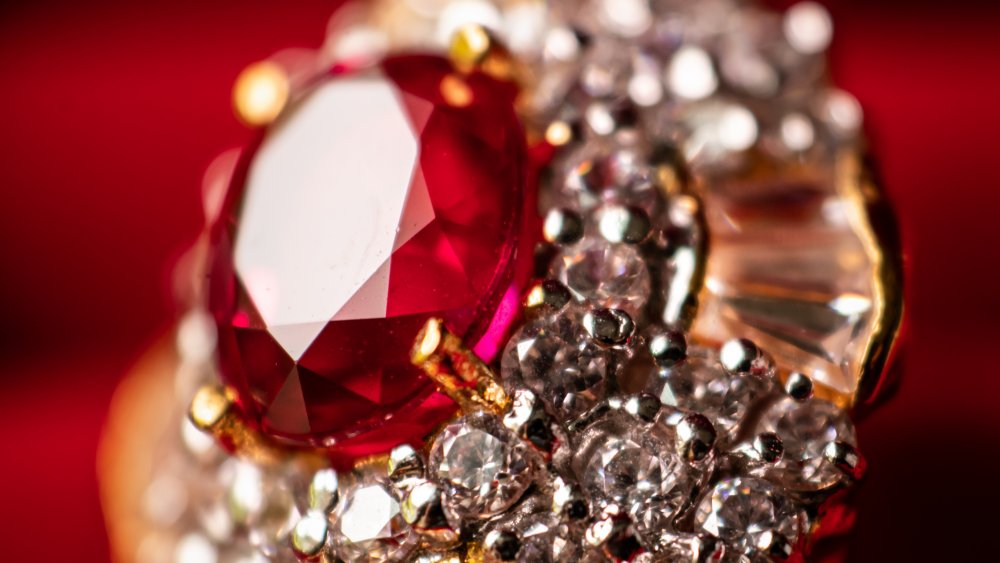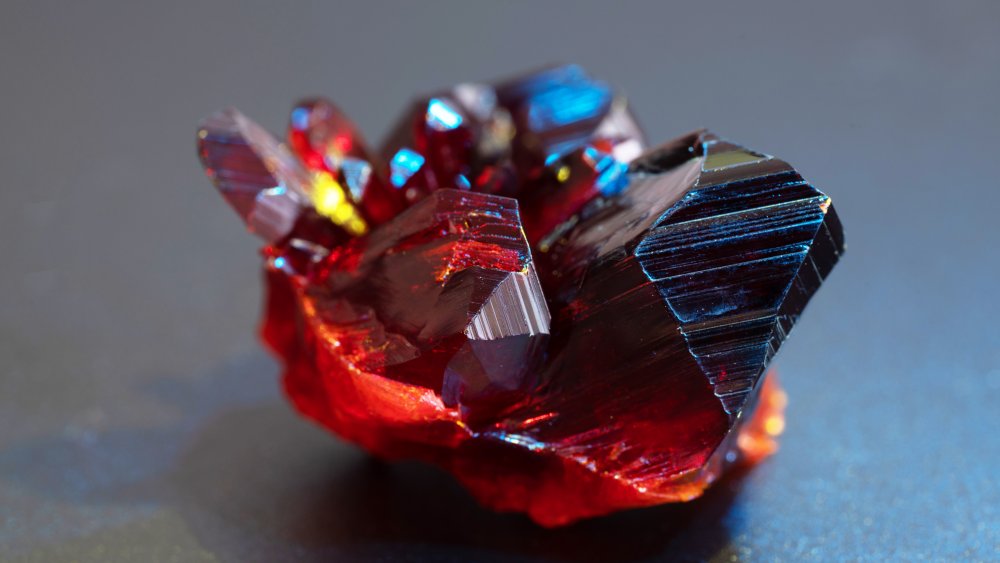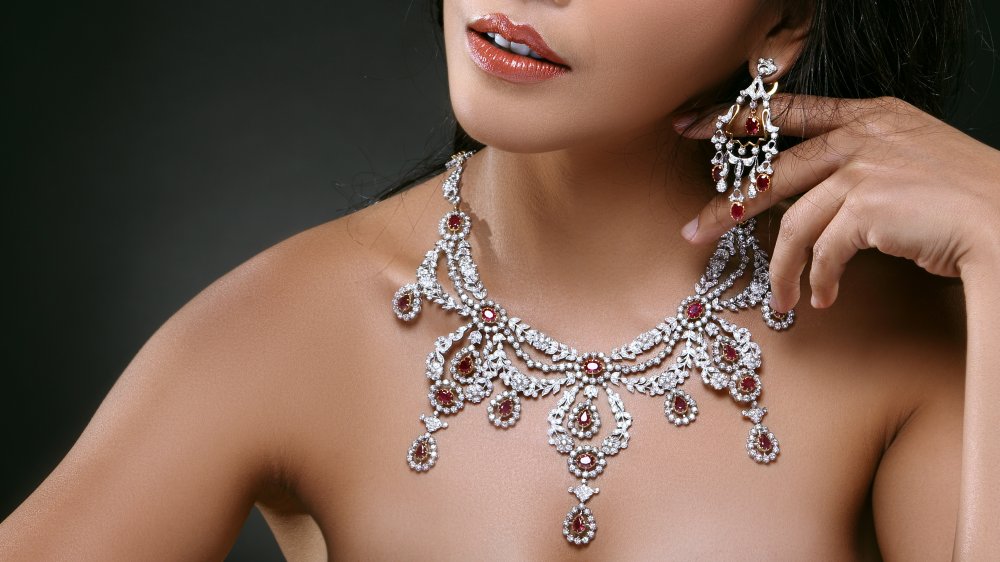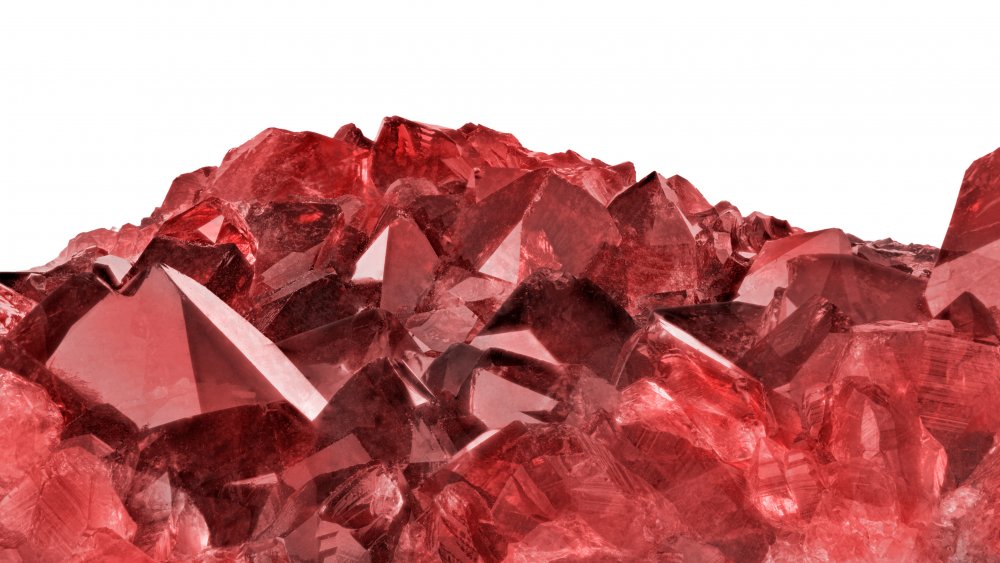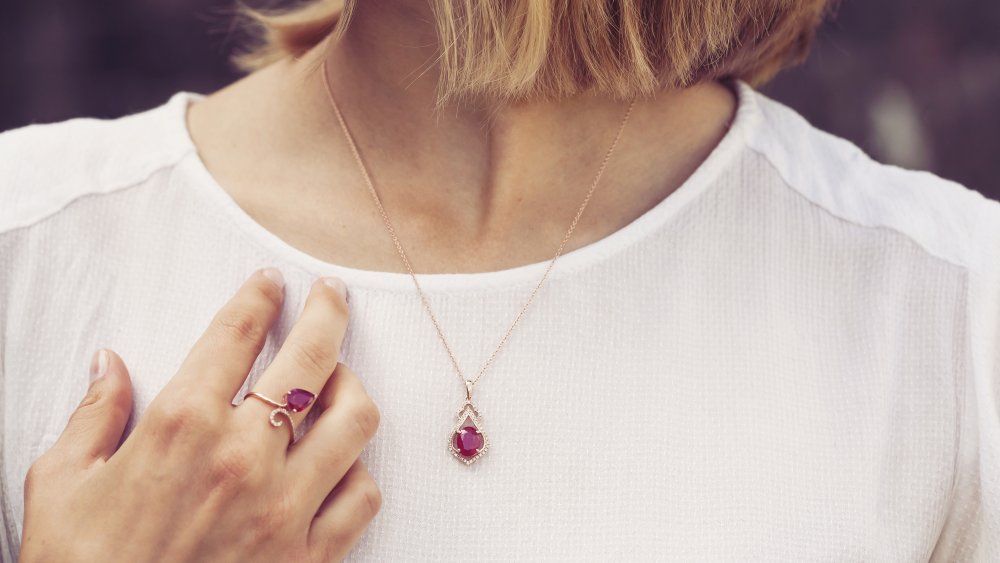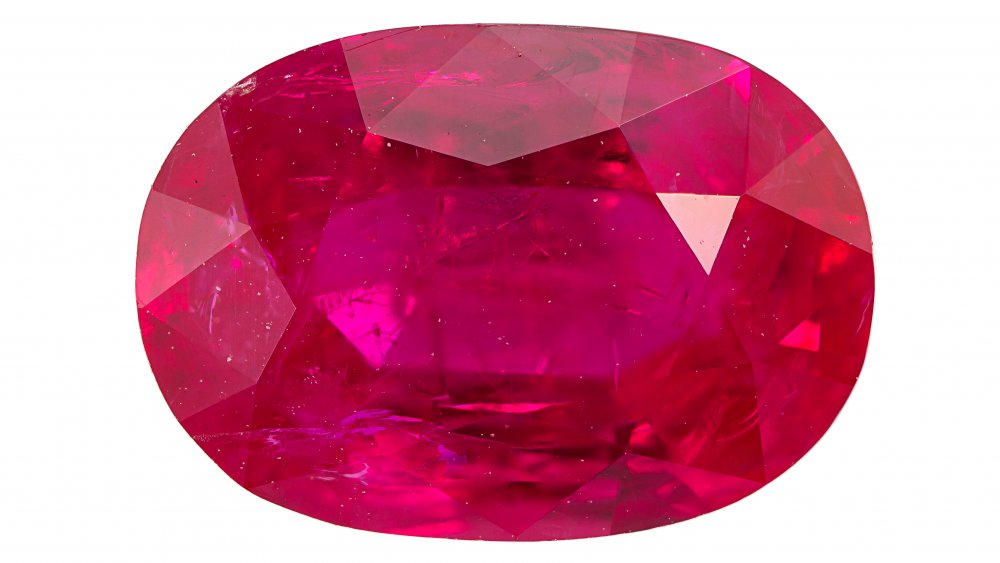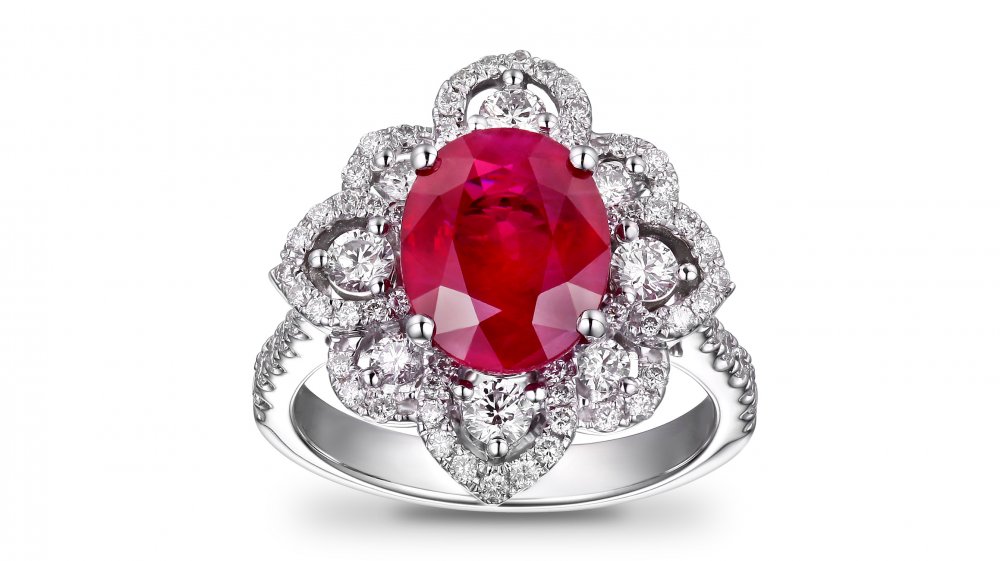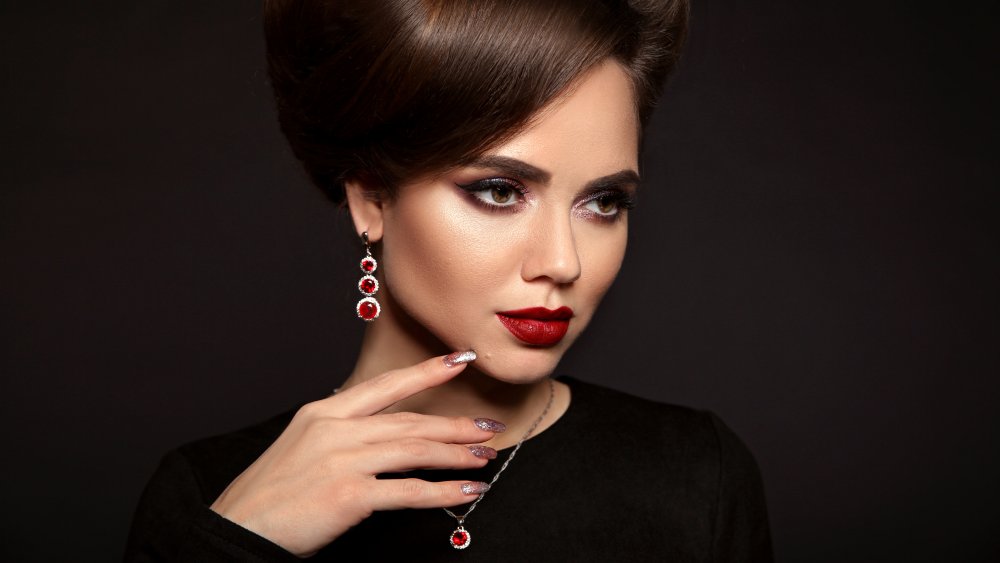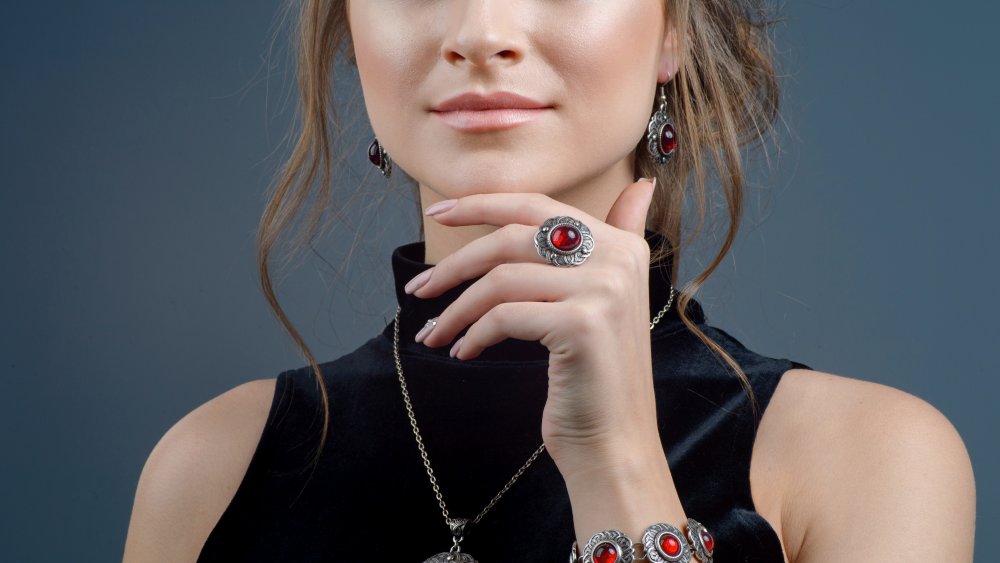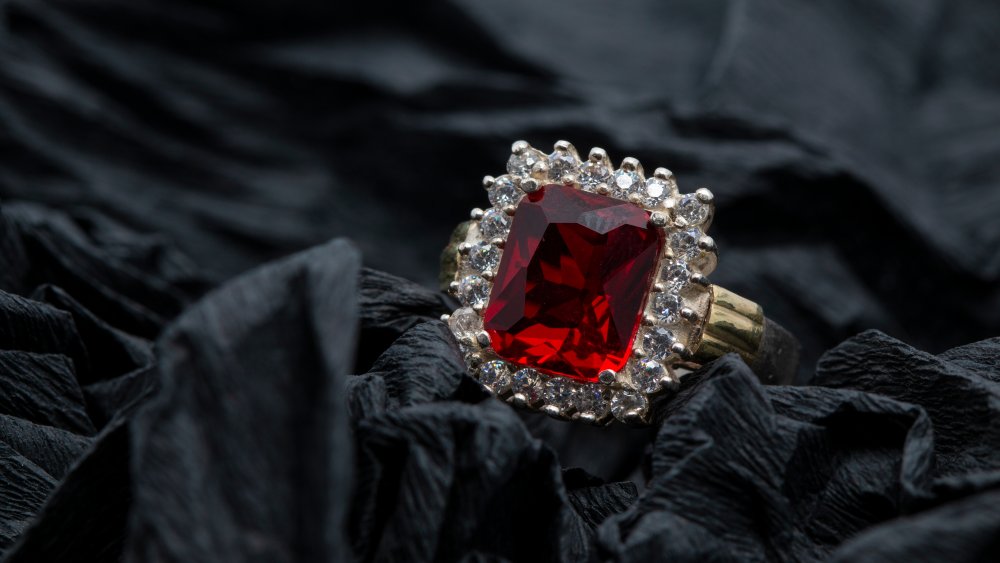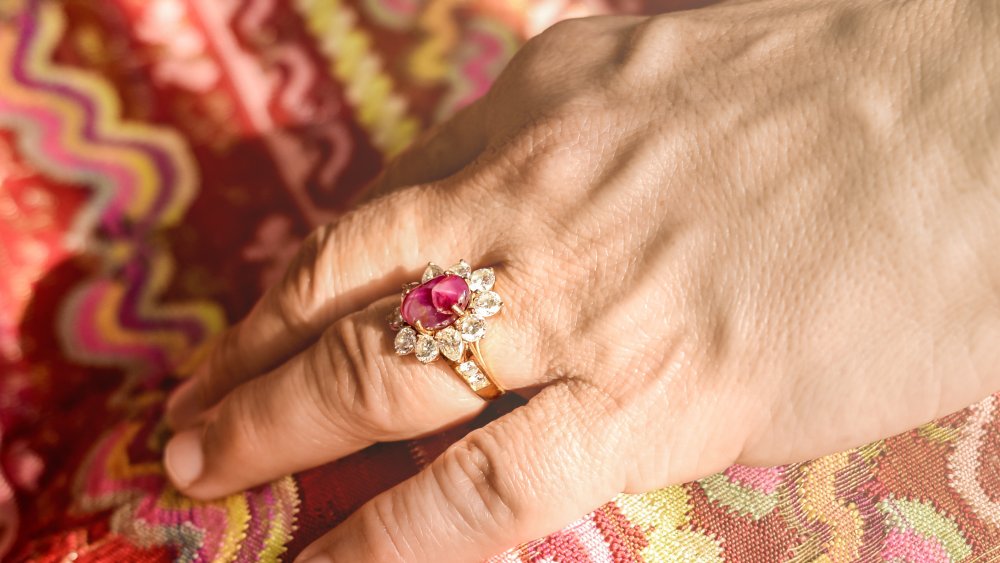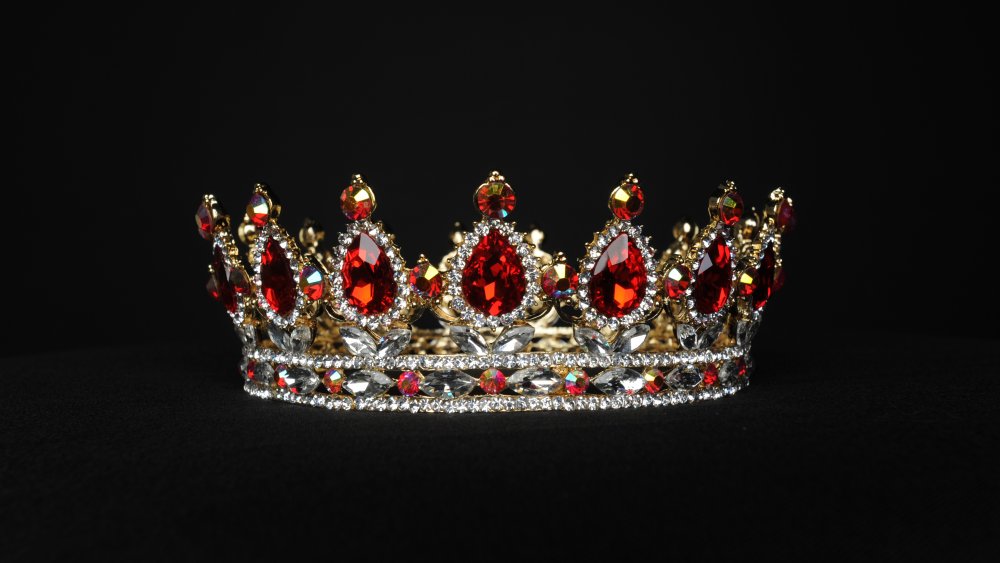Myths You Shouldn't Believe About Rubies
Rubies are some of the most beautiful gemstones in existence. For centuries, people have prized these beautiful sparklers, wearing them as jewelry and giving them away as gifts. Rubies' long history also means people have come up with all sorts of stories about these stunning crimson jewels. Yes, legends and superstitions abound, with different cultures coming up with their own tales about where they came from and what they can do.
Even in modern times, many still believe some of the tall tales that have sprung up around the precious gems, which can make it difficult to separate fact from fiction. Do rubies really have special properties as some people say? Is there any basis for believing that rubies can bring good luck to their owners? It's time to set the record straight. For all the ruby newbies out there, here are some of the myths about rubies you should not believe.
Myth: Rubies and sapphires are different stones
Even if you know next to nothing about precious stones, you probably know that rubies are red and sapphires are blue. That means that they're completely different stones, right? Well, not quite. While the variation between a ruby and a sapphire definitely makes a difference to jewelers and people who want to color-coordinate their jewelry to their outfits, they're the same stone as far as a to gemologist is concerned.
As noted by PBS Nova, both rubies and sapphires are varieties of a mineral called corundum. Corundum in its purest form actually has no color, the Gemological Institute of America (GIA) explained. When mixed with other elements, however, corundum give us beautifully colored gemstones. Rubies get their red color from a trace element called chromium whereas sapphires get their blue hue from iron and titanium.
While we often think of sapphires as only being blue, they can also be white, yellow, orange, green, purple, or pink. It's only the red varieties of corundum (rubies) that get their own name.
Myth: Rubies have protective properties
Rubies are certainly beautiful and can help enhance a killer wardrobe, but can they really do more than provide a bit of sparkle to an outfit? Some people believe that they can. Diane Morgan, an adjunct professor of religion and philosophy at Wilson College wrote in Fire and Blood: Rubies in Myth, Magic, and History that many people throughout history have thought that rubies can actually protect their owners. Morgan wrote that ancient Burmese soldiers went so far as to insert rubies under their skin to protect them in battle.
Another example cited by Morgan was 14th century author Sir John Mandeville, to whom the treatise Le Gran Lapidaire de Jean de Mandeville is attributed. Mandeville wrote in this treatise that a person who owns a ruby would not only be able to live harmoniously with others but would never have their land or their money stolen. Mandeville also alleged that a ruby would guard a person's property from storms. There is, however, no definitive proof that rubies have any sort of protective abilities.
Myth: Rubies have healing powers
Centuries ago, people began attributing healing properties to rubies. While getting a beautiful ruby can certainly lift one's spirits, can it actually cure people of ailments? As noted by Diane Morgan in Fire and Blood: Rubies in Myth, Magic, and History, people throughout history have thought that rubies can heal everything from physical ailments to mental and spiritual distress. The religion and philosophy professor wrote that Naharari, a Kashmir physician who lived during the 13th century, prescribed rubies as a cure for flatulence. This led to a supposed cure for indigestion which consisted of grinding a ruby into a fine powder and then placing on one's tongue.
In more recent times, some people believe that rubies can help those with Alzheimer's disease and are capable of doing everything from treating infections to fevers to arthritis. In the traditional Indian practice of Ayurveda medicine, rubies are said to be able to cure a person's ill temper and lack of patience. None of these treatments, however, seem to be advocated by any mainstream, contemporary medical doctors.
Myth: All red gems are rubies
While people have valued rubies for centuries, not all of the rubies that have been celebrated over the years have actually been rubies. For quite some time, people thought that all red gemstones were rubies — and this is a mistake that's easy to make even today. To be a true ruby, noted the Gemological Institute of America (GIA), a red stone must be made of the mineral corundum.
As the GIA noted, though, many people once mistook spinels, which are made up of magnesium aluminum oxide, for rubies. The institute dubbed this gemstone "the great imposter." Given that some of history's most iconic rubies, like the Black Prince's ruby — a set of rubies in England's imperial State Crown — are actually red spinels, you can understand the nickname. The Timur ruby is another "ruby" featured in England's Imperial State Crown that happens to be a spinel. However, unlike rubies that are known solely for their red color, spinels can be pink, lavender, orange, blue, and, of course, red.
Myth: Rubies are the hardest gemstone
According to the International Gem Society, rubies and sapphires score a 9 on the Mohs Scale of Hardness. What's that mean? The organization explained that "the scientific definition of hardness is the ability to resist scratching." While a ruby is almost as strong as a gemstone gets, there's actually one gemstone that's harder: the diamond. Geology.com noted that diamonds are the hardest minerals out there and achieve the highest score, a 10, on the Mohs Scale of Hardness.
While not quite as hard as a diamond, the hardness of the ruby does set it apart from other red-colored stones like spinels, which only score a 7.5 to 8 on the Mohs Scale, and garnets, which range from 6.5 to 7.5. And, as it turns out, rubies are not as tough as nails — they're tougher. Both fingernails and metal nails are much softer, coming in at 2 to 2.5 and 3 to 6.5, respectively.
Myth: Rubies are an aphrodisiac
It's easy to see how the ancients could have thought that a vibrant red stone, the color of passion, could incite lasciviousness in people, but some took this belief to the extreme. One of the big myths about rubies is that they actually get you in the mood.
As noted by Ravi K. Puri, a retired professor of pharmaceutical sciences, and physician Raman Puri in Natural Aphrodisiacs: Myth or Reality, rubies have been looked upon as an aphrodisiac throughout history and have been consumed in powdered form to boost libido. It wasn't just rubies that were thought to have an aphrodisiac effect, though. Other stones, including sapphires, diamonds, emeralds, and topaz were also consumed as aphrodisiacs. Religion and philosophy professor Diane Morgan noted in Fire and Blood: Rubies in Myth, Magic, and History, however, that some people believe the opposite of this myth, thinking instead that rubies can help suppress an overly active sexual appetite.
Myth: Rubies aren't as rare as diamonds
Thanks to the hold diamonds have on the engagement ring industry, many people think of diamonds as the ultimate gemstone. In reality, though, diamonds aren't all that rare. As noted by Priceonomics, diamond engagement rings only became popular in the 1940s as the result of a massive marketing campaign. Diamonds are sold at a huge markup, which is part of what makes us think they're so exclusive.
The International Gem Society noted that rubies are not only rarer than diamonds but also rarer than sapphires. The rarity of rubies makes them quite expensive. In 2015, a ruby known as the Sunrise Ruby became the most expensive ruby in the world after selling for $30.42 million, Artspace reported.
As noted by The Spruce Crafts, high-quality rubies over 10 carats often sell for more than diamonds of a similar quality. Such rubies can sell for more than $225,000 per carat compared to diamonds which average a price of $125,000 per carat. As the site further revealed, an 8.24-carat ruby ring that belonged to legendary actress Elizabeth Taylor sold for a whopping $4.2 million — approximately $500,000 per carat — in 2011.
Myth: All rubies are a deep red hue
When we think of rubies, we think of the color red. The name itself comes from the Latin word ruber, meaning red. According to the International Colored Gemstone Association, the most-prized and valuable rubies are a shade called "pigeon-blood-red," or "Burmese," which is that vibrant deep red color we associate with the gem. However, it's a myth that all rubies are of the same rich red hue.
Rubies come in many shades of red and can range from light to dark. And, in fact, few rubies are a pure red. Most have a secondary color — typically orange, purple, or pink. They're often treated with heat which helps remove traces of other colors from the stone in order to be a purer red. Many rubies even start off as a brownish color and are turned red through heat treatments. The way a stone is set in jewelry can also affect its color. For example, rubies with purple undertones appear to be pure red when set in yellow gold.
Myth: Rubies are not from this planet
Rubies are stunning, but are they out-of-this-world beautiful? That's what people of the past believed. Religion and philosophy professor Diane Morgan noted in Fire and Blood: Rubies in Myth, Magic, and History that rubies were historically associated with the planet Mars, with some people even believing that rubies are actually sparks struck from the planet that fell to Earth, and that their fire will last until "the world itself grows cold." As author Sarah Kynes wrote in Gemstone Feng Shui, the ancient Romans believed the ruby to be the stone of Mars, the god of war.
The real origins of the ruby are far less mystical but no less fascinating. As noted by Discover, most of the world's rubies are found along an 1,800-mile stretch from Tajikistan to Vietnam. The generally accepted, though unproven, theory supported by most geologists is that these rubies were created millions of years ago when the Asian continent and the Indian subcontinent collided, forming the beautiful Himalayas as well as these beautiful gems.
Myth: Rubies hold the power of life
While it would be nice to think that adorning yourself in rubies could extend your lifespan, most modern people recognize that doing this won't accomplish anything. Well, except make you look incredibly glamorous. Many people over the ages though associated rubies with life and believed that these gems actually held the power of preservation. In addition to the purported healing properties of the ruby, rubies ingested in powdered form were thought to actually be able to preserve one's body after death, or "[keep] the body from corruption after death," as noted by religion and philosophy professor Diane Morgan in Fire and Blood: Rubies in Myth, Magic, and History.
According to the Gemological Institute of America, rubies have long been "associated with the life force blood" and symbolized power and youth in Indian jewelry. Vogue reported that the belief that rubies contained the power of life was shared by many ancient cultures. Ancient Hindus, for example, believed that an offering of rubies to the god Krishna wouldn't affect this life, but would instead result in the giver being reborn as an emperor in the next life.
Myth: Rubies are good for your skin
Countless people over the centuries have longed to find some sort of key to eternal youth and many believed they'd finally found it in the ruby. Religion and philosophy professor Diane Morgan noted in Fire and Blood: Rubies in Myth, Magic, and History one of the contemporary beliefs about rubies: Rubbing one of the stones on the skin will help "maintain its youthful, dewy appearance." Hmm. Don't break out the rubies just yet, though. Morgan also said that this theory about rubies has "unimpressive results when actually tested."
This belief may not sound all that unusual to you, though, given that jade rollers are all the rage in our time. They too are an ancient practice, used in traditional Chinese medicine to improve the skin and boost blood circulation, aesthetician Debra Krueger told CNN. Ruby rollers, however, are less common, but could they work?
Healthline noted that the benefits of face rolling actually come more from the facial massage itself rather than the material of the roller. So, you could argue that a ruby roller would have a similar effectiveness to that of jade. However, a loose ruby itself wouldn't do anything special.
Myth: Rubies change color to warn you of danger
One of the mystical properties attributed to rubies is the ability to change color, as religion and philosophy professor Diane Morgan noted in Fire and Blood: Rubies in Myth, Magic, and History. One belief is that a ruby can warn of impending danger by darkening and then growing lighter again once the danger has passed.
Rubies don't, however, typically change color. However, they can shine more brightly under ultraviolet light, according to the Gemological Institute of America. If you notice that your rubies look a bit different in direct sunlight, it's simply a natural reaction, not some sort of supernatural warning that danger is imminent. A ruby may also look different over time as it can dull through damage and regular wear and tear.
Antique and custom jewelry company Gray & Davis warns that steam and extreme temperature changes can alter the color of unheated rubies. If you do find that your ruby is looking a bit off, it's best to bring it to a professional jeweler.
Myth: Rubies bring good luck
It's a long-held belief that rubies bring good fortune, religion and philosophy professor Diane Morgan noted in Fire and Blood: Rubies in Myth, Magic, and History. The belief persists even in modern times, with many crystal healers claiming that wearing a ruby on your left hand can bring good fortune. Historically, rubies were thought "to absorb the evil rays from malevolent stars" and then transform these rays into "good rays." Cracks in rubies were undesirable, not just because they affected the appearance of the rubies, but because they also let in "evil rays."
Madame de Pompadour, who is best remembered as the chief mistress of France's King Louis XV, is rumored to have worn a large ruby in the shape of a pig as a good luck charm, according to Fire and Blood. While it could be argued that the stone didn't bring her much luck as she died in 1764 at the age of 42, her early death did mean she missed the terror of the French Revolution in which King Louis XV's successor, King Louis XVI, and his wife, Marie Antoinette, were beheaded by guillotine. So, you be the judge.
Myth: Rubies can make you more confident
While wearing a gorgeous ruby can definitely boost your ego, some people think that it can actually boost your confidence. While it's a myth that rubies themselves are confidence enhancers, there's some evidence that the color red can affect us on a subconscious level.
BBC Future noted that the color has been "linked with power, aggression, and sex." A study conducted by University of Durham psychologists Russell Hill and Robert Barton during the 2004 Summer Olympics found that athletes in combat sports like boxing and tae kwon do were five percent more likely to win if they were cloaked in red.
Psychology professor Andrew Elliot explained to BBC that people wearing red have a tendency to feel more dominant, which in turn can boost a person's heart rate and testosterone levels thus improving performance. He added that seeing an opponent wearing red can have the opposite effect, causing someone to "feel fear and... lower status" thus leading to a decrease in testosterone. Sporting red gemstones may very well give you a confidence boost thanks to their color, but it all comes down to psychology — not exactly mystical powers.
